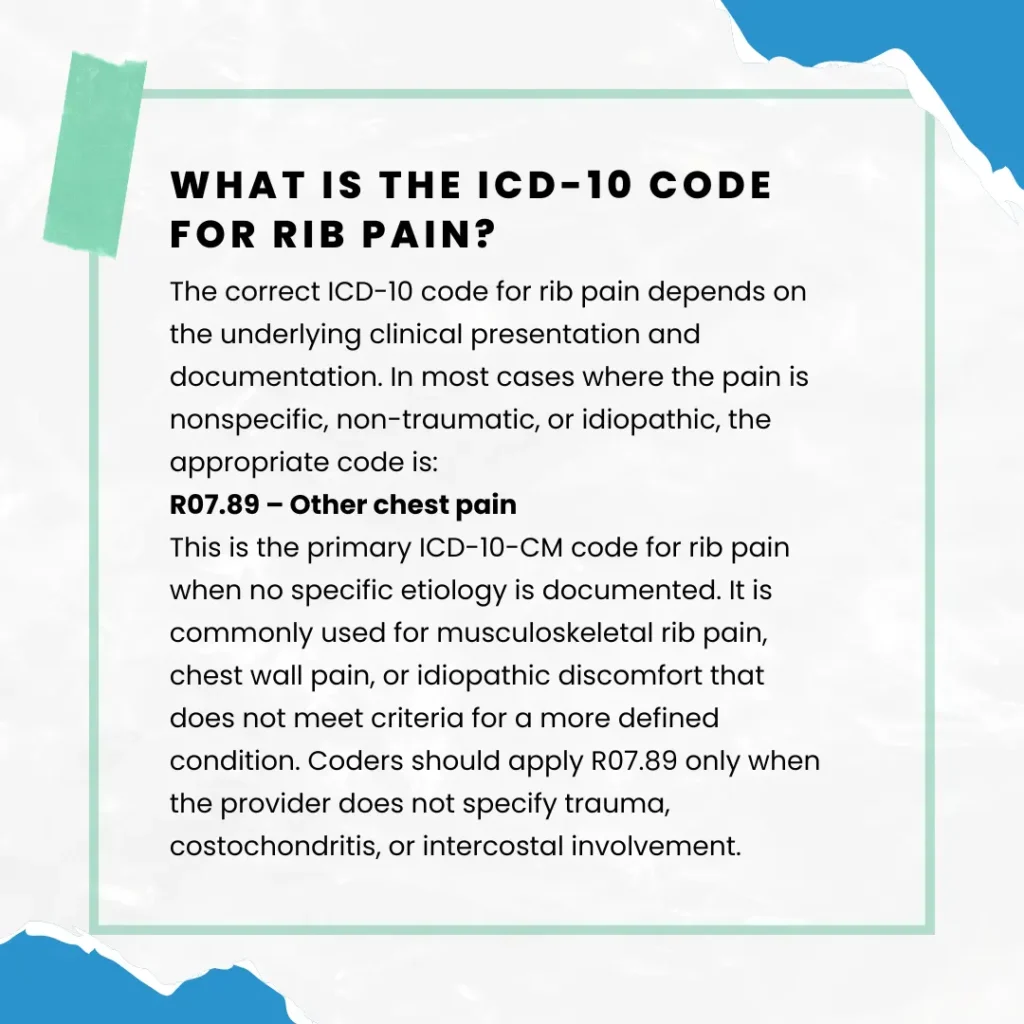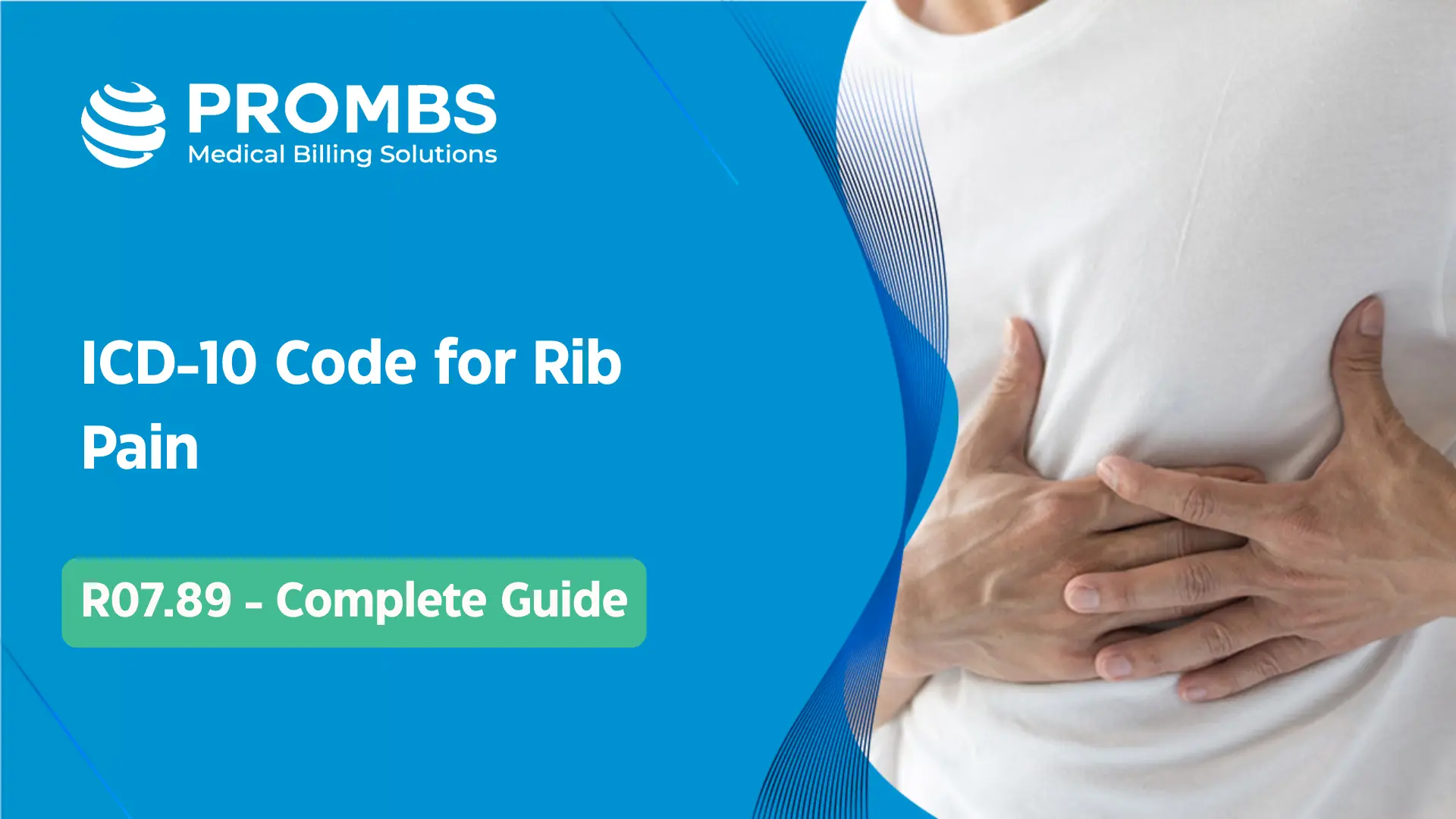Accurate ICD-10-CM coding for gastrointestinal conditions is critical for proper reimbursement, audit compliance, and clinical data integrity. Chronic constipation, though often considered a benign condition, can have significant implications on patient quality of life, healthcare resource utilization, and reimbursement workflows. For coders, the challenge lies in identifying the correct code based on clinical documentation, differentiating subtypes, and applying official coding guidelines to avoid denials or underpayments.
In addition, payers often scrutinize chronic constipation claims for medical necessity especially when tied to high-cost diagnostic procedures or long-term pharmacologic therapy. Coders and CDI specialists must ensure that documentation reflects both the clinical basis for the diagnosis and the chronicity of the condition.
This guide breaks down what chronic constipation is, the correct ICD-10-CM coding approach, related billable codes, documentation standards, and best practices to ensure coding accuracy in both inpatient and outpatient settings.
What is Rib Pain and Its Symptoms?
Rib pain refers to discomfort, pressure, or tenderness arising from the rib cage, chest wall, intercostal muscles, or costochondral junctions. In clinical settings, rib pain may present as acute rib pain following trauma, coughing, or sudden strain, or as chronic rib pain associated with inflammation, musculoskeletal dysfunction, or pleural irritation. Correct diagnosis and documentation are essential, as the ICD-10 code for rib pain varies depending on whether the pain is idiopathic, intercostal, inflammatory, or trauma-related.
Common rib pain symptoms include:
- Sharp or stabbing rib cage pain localized to one or more ribs.
- Pain that worsens with deep breathing, coughing, or chest expansion, often documented as pleuritic rib pain.
- Localized tenderness along the chest wall or costochondral junction, noted during palpation.
- Referred pain radiating to the upper back, shoulder, or thoracic spine, sometimes confused with dorsalgia ICD-10 coding.
- Bruising, swelling, or deformity in cases of rib fracture or trauma, requiring use of rib fracture ICD-10 codes (S22 series).
- Postural stiffness or pain aggravated by movement, commonly linked to costochondritis (M94.0 ICD-10 code) or intercostal muscle strain.
The underlying etiology of rib pain determines which ICD-10 code is most accurate. For example, ICD-10 Code for Rib Pain (R07.89) is the standard code for nonspecific rib pain, while R07.82 (Intercostal pain ICD-10 code) is used when the pain is localized between the ribs. In cases of inflammation at the rib–sternum junction, M94.0 (Costochondritis ICD-10 code) is appropriate. When imaging confirms trauma, coders must use S22 codes for rib fractures or S23.41XA for rib sprain with proper laterality and encounter extensions.

Other Related ICD-10 Codes for Rib Pain
- R07.82 – Intercostal pain ICD-10 code
Used when rib pain is clearly documented as intercostal pain, typically described as discomfort localized between the ribs due to muscle strain, nerve irritation, or post-surgical pain. This code provides greater specificity than R07.89 and should be applied when documentation supports intercostal origin. - R07.81 – Pleurodynia ICD-10 code
Reserved for cases where rib pain arises from pleural inflammation (pleuritic chest pain). Coding authorities, including the AHA Coding Clinic, have clarified that R07.81 should not be used for general rib pain. Instead, it should be assigned only when the provider explicitly documents pleuritic pain or pleurodynia. - M94.0 – Costochondritis (Tietze’s syndrome) ICD-10 code
Selected when rib pain is caused by inflammation of the costochondral junction. Documentation may reference tenderness, swelling, or pain localized to the junction between the ribs and sternum. This code is essential for distinguishing inflammatory costochondritis from nonspecific rib pain or trauma-related rib fractures.
Quick Reference Table: ICD-10 Codes for Rib Pain
| Scenario | ICD-10 Code | Notes |
|---|---|---|
| General rib pain, nonspecific | R07.89 | Standard code for idiopathic rib pain. |
| Intercostal pain (between ribs) | R07.82 | Use when intercostal origin is documented. |
| Pleurodynia (pleural pain) | R07.81 | Specific to pleuritic pain, not generic rib pain. |
| Costochondritis (Tietze’s syndrome) | M94.0 | Inflammatory cause of rib pain. |
| Right rib fracture | S22.31XA | Requires laterality and encounter detail. |
| Left rib fracture | S22.32XA | Requires laterality and encounter detail. |
| Rib sprain | S23.41XA | For musculoskeletal injuries. |
| Chest pain, unspecified | R07.9 | Avoid if rib pain is documented. |
| Musculoskeletal back pain (if confirmed) | M54.9 | Only when documentation supports dorsalgia. |
Which Code Applies to Right-Side vs. Left-Side Rib Pain?
In ICD-10 Code for Rib Pain (R07.89) is the most frequently used code for nonspecific rib pain, and it does not differentiate laterality. This means that whether the provider documents right-sided rib pain or left-sided rib pain, the same ICD-10 code is applied as long as the pain is non-traumatic and not linked to a more specific condition. This approach simplifies coding for idiopathic or musculoskeletal rib pain, but it also places greater emphasis on provider documentation to ensure that coders do not overlook trauma or underlying pathology.
When rib pain is related to rib fractures, laterality becomes essential. In these cases, coders must assign a more specific rib fracture ICD-10 code from the S22 series. Examples include:
- S22.31XA – Fracture of one rib, right side, initial encounter (closed)
- S22.32XA – Fracture of one rib, left side, initial encounter (closed)
These trauma-related ICD-10 codes not only capture laterality but also require seventh-character extensions (A, D, S) to indicate the type of encounter:
- A – Initial encounter (active treatment, such as evaluation, surgery, or fracture management)
- D – Subsequent encounter (routine follow-up, healing phase, or cast change)
- S – Sequela (complications or conditions that remain after the acute phase, such as chronic pain from an old rib fracture)
Accurate coding of right-sided rib fracture ICD-10 codes and left-sided rib fracture ICD-10 codes is critical for compliance. Omitting laterality or failing to use the correct seventh character often leads to denials, rejections, or payer audits. To prevent these issues, coders should confirm whether the documentation specifies:
- Laterality (right, left, or bilateral ribs)
- Whether the fracture is displaced or nondisplaced
- The encounter type (initial, subsequent, sequela)
- Whether imaging supports the diagnosis
By ensuring that all of these details are documented and coded correctly, providers and coders can reduce denial risk and maintain compliance with payer-specific requirements for rib pain ICD-10 coding.
Can Rib Pain Be Coded as Dorsalgia if It’s Musculoskeletal?
In some clinical scenarios, providers may document rib pain as part of musculoskeletal back pain rather than as an isolated chest wall condition. This often creates confusion in coding, since the ICD-10-CM includes M54.9 – Dorsalgia, unspecified, which broadly applies to back pain without a defined anatomical source. Coders sometimes ask whether rib pain ICD-10 codes can be substituted with the dorsalgia ICD-10 code when the provider indicates a musculoskeletal origin.
Coders must not substitute dorsalgia codes (M54.9) for rib pain unless the provider specifically documents a thoracic spine or paraspinal source. If the pain is localized to the ribs or chest wall, R07.89 (Other chest pain) remains the correct assignment. Misusing dorsalgia codes for rib pain without documentation support may be flagged as overcoding or miscoding, leading to denials and audit risk. Using dorsalgia codes for rib pain without supporting documentation may lead to payer denials, medical necessity disputes, or coding audit findings.
Best practice: When documentation is unclear, coders should query the provider to clarify the origin of the pain. If the pain is localized to the ribs or chest wall, assign R07.89 (Other chest pain ICD-10 code for rib pain). If the pain is documented as thoracic spine pain ICD-10, or described as musculoskeletal back pain without rib involvement, then M54.9 (Dorsalgia, unspecified) may be appropriate. This distinction ensures accurate code assignment, supports medical necessity, and prevents improper claim denials.
Why Do Rib Pain Claims Get Denied?
Even when coders correctly assign an ICD-10 code for rib pain, claims may still face denials if the documentation and coding do not fully align with payer requirements. Rib pain falls under the R07 category (Pain in throat and chest), but improper use of R07.9 (Chest pain, unspecified) or outdated codes like R07.81 (Pleurodynia) often leads to rejections. Similarly, failure to apply rib fracture ICD-10 codes (S22 series) with laterality or to link the diagnosis to medical necessity can cause payers to flag claims. Understanding these denial triggers is critical to maintaining compliance and protecting revenue.
1. Nonspecific Documentation
One of the most common issues is vague provider documentation. When records state only “chest pain” without specifying rib involvement, coders may default to R07.9 (Chest pain, unspecified). However, the correct ICD-10 Code for Rib Pain is R07.89 (nonspecific). This lack of specificity not only impacts coding accuracy but also weakens the claim’s justification, resulting in payer denials.
2. Improper Use of Outdated Codes
The use of R07.81 (Pleurodynia ICD-10 code) for generic rib pain is outdated and no longer recommended by the AHA Coding Clinic. Pleurodynia refers specifically to pleuritic chest pain, not idiopathic or musculoskeletal rib pain. Submitting rib pain claims with R07.81 increases the risk of non-covered claims since payers often reject codes that do not match the clinical documentation.
3. Failure to Document Trauma Details
4. Mismatch Between Clinical Findings and Code Selection
5. Insufficient Linkage to Medical Necessity
Finally, claims may be denied when documentation fails to establish medical necessity. For rib pain, this means explaining why the evaluation, imaging, or treatment was warranted. If provider notes simply state “rib pain” without linking it to functional impairment, trauma, or differential diagnosis, payers may classify the claim as insufficiently justified. To avoid this, documentation should explicitly support why the rib pain ICD-10 code was assigned and why services were clinically necessary.
Documentation Requirements for Rib Pain Coding — step by step
Even when coders correctly assign an ICD-10 code for rib pain, claims may still face denials if the documentation and coding do not fully align with payer requirements. Rib pain falls under the R07 category (Pain in throat and chest), but improper use of R07.9 (Chest pain, unspecified) or outdated codes like R07.81 (Pleurodynia) often leads to rejections. Similarly, failure to apply rib fracture ICD-10 codes (S22 series) with laterality or to link the diagnosis to medical necessity can cause payers to flag claims. Understanding these denial triggers is critical to maintaining compliance and protecting revenue.
1. Capture pain location and laterality
Document whether it is right-sided rib pain, left-sided rib pain, bilateral rib pain, or intercostal pain. Laterality is essential for injury codes in the rib fracture ICD-10 code S22 series. Clear location guides selection between R07.89 Other chest pain and R07.82 intercostal pain ICD-10.
2. State the clinical etiology
Record the suspected or confirmed cause: trauma, costochondritis, pleurisy, intercostal muscle strain, idiopathic rib pain. If inflammatory at the costochondral junction, note costochondritis ICD-10 code M94.0. If pleural inflammation is present, consider R07.81 pleurodynia.
3. Rule out cardiac and pulmonary causes
Include negative findings that distinguish chest wall pain from systemic conditions. Note normal ECG or cardiac enzymes when appropriate, absence of pneumonia or pulmonary embolism, and clinician assessment that pain is musculoskeletal rib pain. This supports use of R07.89 rather than R07.9 chest pain unspecified.
4. Document trauma mechanism when applicable
For injury presentations, describe how it occurred: fall, sports injury, motor vehicle collision, coughing spell. This supports accurate selection within S22 rib fracture or S23.41XA rib sprain and enables required external cause codes V00–Y99 when payers ask for them.
5. Confirm injury status with diagnostics
Reference imaging or exam findings. Example: chest X-ray confirms single right rib fracture, CT excludes pneumothorax, ultrasound shows no effusion. Imaging detail drives specificity within S22.31XA right rib fracture initial encounter or S22.32XA left rib fracture initial encounter.
6. Specify encounter type for injuries
7. Record associated symptoms and exam findings
8. Link signs and tests to medical necessity
9. Select the most specific diagnosis code
- R07.89 for nonspecific rib pain that is non-traumatic and not intercostal.
- R07.82 when documentation states intercostal pain.
- M94.0 when rib pain is due to costochondritis.
- R07.81 only for pleuritic pain with pleural involvement.
- S22 series for confirmed rib fractures with laterality and encounter type.
Avoid defaulting to R07.9 when the record supports a more specific option.
10. Add external cause and place of occurrence codes when required
11. Document treatments and response
Record interventions such as analgesics, breathing exercises, rib belt advice, activity modification, or referral to pulmonology or orthopedics. Response to treatment supports the ongoing necessity for services and follow-up coding.
12. Close the loop with a precise assessment statement
End the note with a one-line assessment that mirrors coding. Example: “Non-traumatic right-sided chest wall pain consistent with intercostal strain, no cardiac or pulmonary etiology, plan conservative care. Code R07.82.”
How Pro-MBS Helps Ensure Accurate Rib Pain Coding
We specialize in medical billing and coding accuracy, helping providers avoid common errors that lead to claim denials. Our team of certified coders reviews documentation in detail to ensure that rib pain is coded with the correct ICD-10-CM code whether it is R07.89 for nonspecific rib pain, R07.82 for intercostal pain, M94.0 for costochondritis, or S22 series codes for rib fractures with laterality and encounter type. By aligning coding practices with payer guidelines and Coding Clinic updates, we safeguard compliance and improve first-pass claim acceptance rates.
Beyond code assignment, Pro-MBS supports providers with documentation improvement strategies. We work directly with clinical teams to ensure notes include laterality, encounter type, and etiology details that strengthen coding accuracy. This proactive approach not only reduces denials but also enhances revenue integrity by ensuring every claim reflects the clinical complexity of the encounter.



